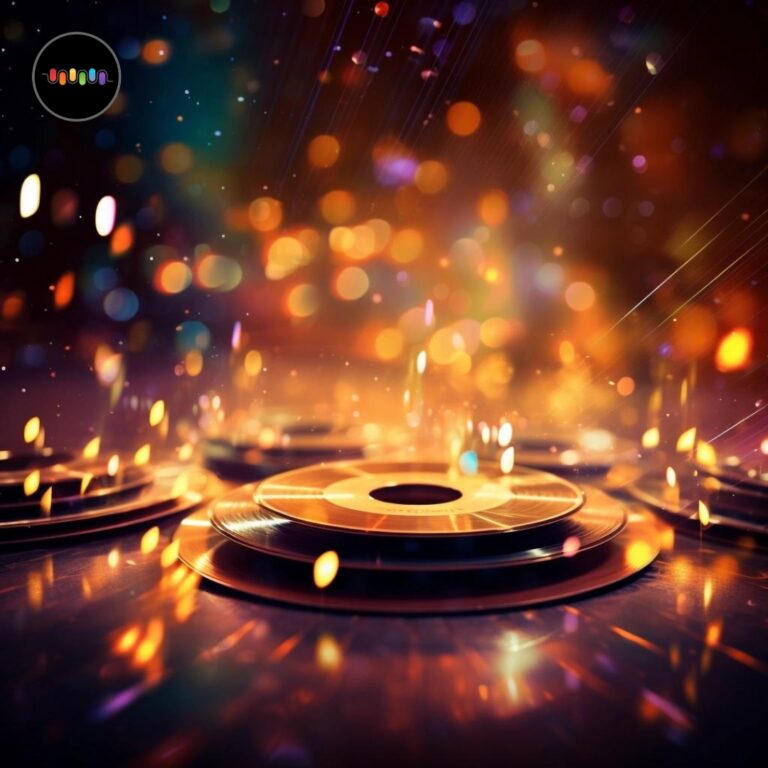Why do you watch a TikTok, Instagram reel, 10-minute-long YouTube video, or even an entire movie?
Let us guess.
The content? The landscape? The story?
Yup! All of these matter, but what else?
The background music? Yes, that’s right!
Background music is the heart of a video, and you cannot risk picking the wrong one.
But what bothers us is that many content creators and short-film makers still don’t have any clue on why they should use background music in their videos, which stock music library to refer to for accessing suitable background music, and most importantly, how to use background music in their short films.
If all these questions are at the top of your mind, this guide will answer them.
What is background music?
Ever watched a horror movie or an ocean video without sound?
There you have your answer – background music helps a creator or a director interpret the feelings in a scene. These feelings could be happiness, excitement, humor, horror, sadness, or other emotions.
Suitable background music translates these emotions beautifully to the audience by being the bridge between the viewers and the visual images.
The right track or background music will direct your film in the desired flow by easing transitions and amplifying the feeling that’s already there in your audience’s mind.
Why does background music matter for short films?
Think of classics like Forest Gump, Interstellar, Inception, Harry Potter Series, Titanic – yes, the stories and casts were great. Still, you cannot ignore the role background music played in these movies, can you?
Let us break down why exactly background music should be a top priority for short filmmakers:
To set the tone and theme of your movie
Background music sets the right tone and develops the theme for each character. Suppose the anti-hero enters the frame. An apt background music here would be a wicked one, so the audience can predict that something terrible is about to happen.
Similarly, when a wedding occurs on screen, joyful music will play in the background, and the viewers will know that a celebration is on the cards.
Ensure that your movie dynamics stay uninterrupted
A good movie is never linear. It has a lot of dynamics. Think of Titanic. The movie started on a lighter note. There was romance, humor, celebrations, and whatnot! However, the film’s second half gives the viewers a stressful vibe, which soon transitions to grief with the hero’s death.
With the right background music, showcasing these different dynamics and emotions in the movie was easy. In fact, there were silent scenes with no dialogue, and the background music owned those scenes.
To explain the time or cultural transition
Remember how a particular background music would be played in the Harry Potter movies every time Harry reached Hogwarts?
That is an intelligent use of background music to showcase a time shift, location shift, or cultural transition.
Basic types of music licenses you should know before picking your background music
If you don’t know this already, let me break down the bubble around background music.
As much as you HAVE to add background music to your videos and short films, you won’t get it everywhere. And before you pick any randomly available music, you must know about music licenses.
While there are many music license types, here are three most relevant ones for content creators:
Royalty-free music license
A royalty-free music license ensures you don’t have to pay for background music or songs every time you play it. With a one-time royalty-free licensing fee, you can use the music multiple times for personal and commercial purposes.
Synchronization License (Sync License)
This type of music license refers to music that will be synced with some form of visual media. Sync licenses can be used for different purposes, including commercial usage, movies, streaming advertisements, personal content, etc.
Public domain
Music with a public domain music license is free for everyone. You can download them for free, use them in your personal or commercial videos, and even remix them without worrying about legal issues. But relying on public domain sources might restrict your creativity as they have limited songs, which means repeatedly using the same background music.
Tips to pick the best background music for your short film
By now, you know what royalty-free background music is and why you need it for your short films and other video content.
Before you get started, here are a few tips to smoothen your journey:
1. Use an AI music generator like Beatoven.ai
Beatoven.ai is an AI music generator that helps short filmmakers and content creators access royalty-free, original, and unlimited music. Beatoven’s ChatGPT-like user interface allows you to add prompts based on your music requirements and generates numerous background music options based on your inputs. It is that simple.
Some of its major features include:
Beatoven works with seasoned and aspiring musicians to create original music. That means you’ll never run out of choices. The output generated by this AI music generator is production-ready with an expert touch of mixing and mastering.
Beatoven recently got certified by Fairly Trained for respecting creator rights.
2. Decide on your genre based on theme of the film
Before zeroing on the background music, make sure to get a distinct idea on the theme of your movie. As a short filmmaker, you already know the primary theme of your movie, it could be horror, funny, mystery, romance and so on. Now you need to develop the perspective on how to use music that aligns with these themes.
Start with asking yourself these questions:
Once you find answers to these questions, picking the music genre for your short film will be easier.
3. Don’t go for the same old themes, stay open for experiments
Music surprises the audiences and stays with them for a long term, only if you use it strategically. We know that there are some tried and tested background themes but going for what’s obvious is not always the best solution. Especially with music when there is so much room for experimentation.
Experiment with music of different genre, cultures, artists and tools to find out what suits the most with your content. Be creative as good music has no boundaries.
Ready to generate your original, royalty-free background music?
Are you ready to explore stock libraries and AI music generators like Beatoven.ai to begin your journey of creating royalty-free music?
Start with Beatoven.ai, as it is a one-of-a-kind platform that works with seasoned musicians to generate unique background music. Use this platform to customize these tracks as per your content requirements.
FAQ
What db should background music be?
We recommend your background music volume to be 40DB so it is neither too loud nor too low.
Wav vs MP3 – what are the differences?
WAV files are larger and of better quality. MP3 files are compressed compatible but often lag on the quality front.
What type of music is best for background?
There are no hard and fast rules, but based on our observations, classic rock and corporate tones work well as background music.

Sreyashi Chatterjee is a SaaS content marketing consultant. When she is not writing or thinking about writing, she is watching Netflix or reading a thriller novel while sipping coffee.


